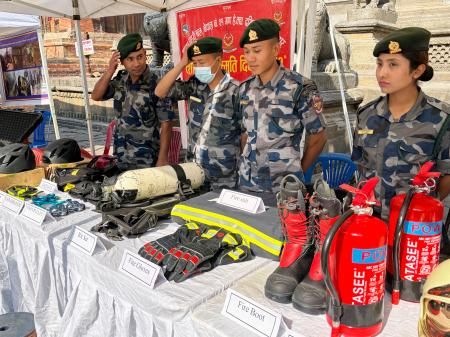A Decade After: Nepal's Earthquake Lessons – Rebuilding Resilience
Ten years after the devastating 2015 Nepal earthquake, the nation continues its journey of recovery and reconstruction. The 7.8 magnitude quake, and its powerful aftershocks, left a trail of destruction, claiming thousands of lives and leaving a lasting impact on the country's infrastructure, economy, and social fabric. This anniversary offers a crucial opportunity to reflect on the lessons learned and chart a course towards a more resilient future. This article explores the key takeaways from the disaster, highlighting both the challenges overcome and the ongoing need for preparedness.
The Scars Remain: Remembering the Devastation
The 2015 Gorkha earthquake was a stark reminder of the vulnerability of even the most rugged landscapes. The earthquake's epicenter, located in Gorkha District, triggered landslides, collapsing buildings, and widespread devastation, particularly in Kathmandu, the capital city. Images of crumbled temples, shattered homes, and the desperate search for survivors remain etched in global memory. Beyond the immediate loss of life (officially over 9,000, though estimates vary), the earthquake caused:
- Widespread infrastructure damage: Hospitals, schools, and vital transportation networks were severely impacted, hindering rescue efforts and subsequent recovery.
- Economic disruption: The earthquake dealt a crippling blow to Nepal's economy, disrupting tourism, agriculture, and trade.
- Social upheaval: Thousands were displaced, leading to overcrowded camps and protracted challenges related to housing, sanitation, and access to basic services.
Lessons Learned: Building Back Better
The aftermath of the earthquake spurred significant changes in Nepal's approach to disaster preparedness and urban planning. Key lessons learned include:
1. The Crucial Role of Building Codes and Enforcement:
The earthquake exposed the inadequacy of existing building codes and their inconsistent enforcement. Many structures, especially in older parts of Kathmandu, were not built to withstand seismic activity. This highlighted the critical need for:
- Stricter building codes: Updated codes incorporating modern seismic design principles are essential.
- Effective enforcement mechanisms: Robust monitoring and inspection processes are necessary to ensure compliance.
2. Community Engagement and Participation:
Successful reconstruction requires active participation from affected communities. Local knowledge and input are crucial for designing and implementing effective solutions. The disaster highlighted the importance of:
- Community-based disaster risk reduction (CBDRR): Engaging local communities in preparedness, mitigation, and recovery efforts.
- Transparent and inclusive decision-making processes: Ensuring that affected communities have a voice in shaping the reconstruction process.
3. Strengthening Early Warning Systems and Disaster Response:
While some early warning systems were in place, the scale of the disaster underscored the need for improved preparedness and response mechanisms. This includes:
- Investing in advanced early warning systems: Improving seismic monitoring capabilities and developing more effective communication strategies.
- Enhanced training for first responders: Providing adequate training and resources to emergency services personnel.
- Improving disaster logistics and coordination: Streamlining the delivery of aid and resources to affected areas.
4. The Importance of International Collaboration:
The international response to the Nepal earthquake demonstrated the vital role of global cooperation in disaster relief and reconstruction. However, it also highlighted the need for:
- Effective coordination mechanisms: Improving the coordination of international aid and ensuring that it aligns with national priorities.
- Building local capacity: Supporting the development of local expertise and institutions to manage future disasters.
Looking Ahead: A Path Towards Resilience
Nepal's journey of recovery from the 2015 earthquake continues. While significant progress has been made, challenges remain. Continued investment in disaster preparedness, robust building codes, community engagement, and international collaboration is essential to ensure a more resilient future. The memories of the devastating earthquake serve as a powerful reminder of the importance of learning from the past to build a safer and more sustainable Nepal.
Call to Action: Learn more about organizations supporting Nepal's earthquake recovery efforts and consider contributing to their vital work. You can find a list of reputable organizations through a simple online search.
